Dance Video Index
In this database, you will find 340 dance videos which were collected in the 2023 and 2024 fiscal year under the auspices of the EPAD (Eternal Performing Arts Archives and Digital Theatre) .
Overview
-
Mu (illusion of Emptiness)
"Do-zan draws its inspiration from the Japanese performing arts of Noh Drama, Butoh and traditional Japanese Dance (Azuma Style). Each member of Dozan has travelled overseas to pursue intensive training in the Japanese performing arts, only to return to Australia to create works which are highly personal in nature, woven with the richness of Japanese movement techniques, costumes, characters and poetry. Yumi Umiumare created and performed ""Mu"" (illusion of Emptiness) whose program note reads:
Holding breath
Floating in the haze
Nurturing the point before
Releasing your breath sharply with a ""pah""!"
- Participated in the Castlemaine Festival
- The video was recorded in August, 1994 at St Carthage’s Church where Cherie Whitington, Jill Orr, Tony Yap and Yumi Umiumare presented their own pieces in DO-ZAN.
- Umimare's words are taken from the program for DO-ZAN presented at Castlemaine Library Hall.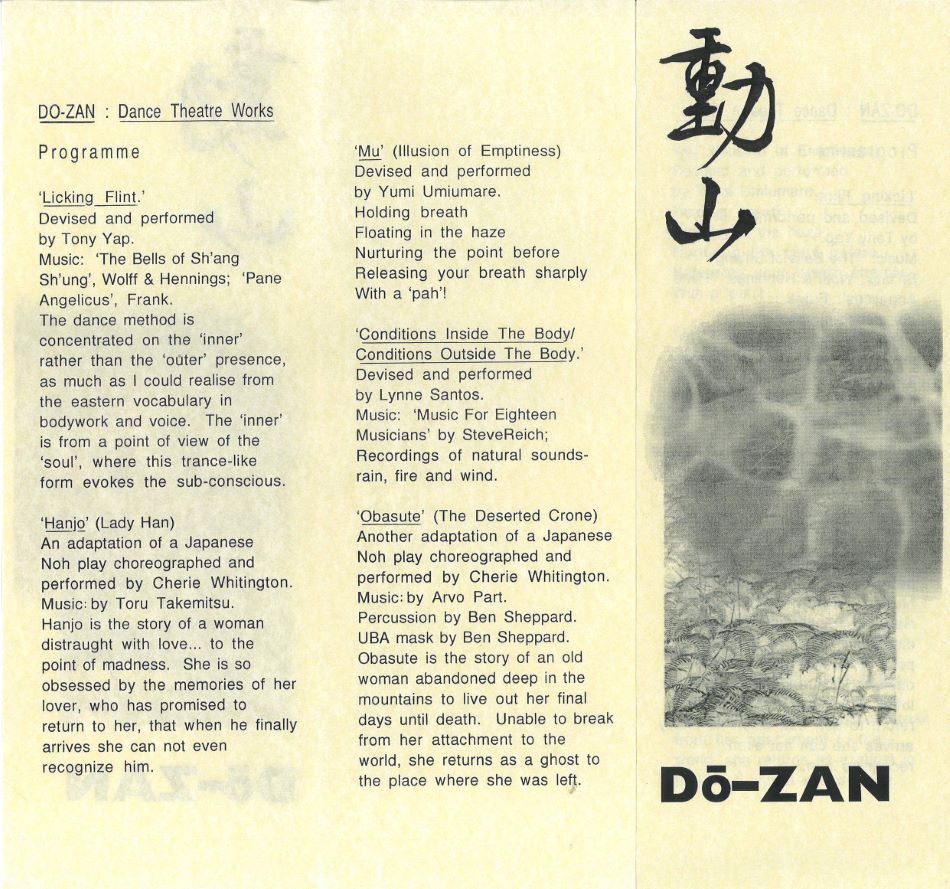
- Performer(s)
- Yumi Umiumare
- Director/Choreographer
- Yumi Umiumare
- Venue
- St Carthage’s Church
- Year performed
- 1994
-
Mushibiraki
Sending off Tatsumi Hijikata 'Mushibiraki' - Tohoku Butoh Masudama' was an event held in Masudama Village in Yamagata as a sending off event after the death of Tatsumi Hijikata in January 1986. According to the programme nearly 50 butoh dancers participated on 10 stages across the village. 'Mushibiraki' is what Hijikata referred to spreading costumes out on the verandah at the end of the rainy season.
In the film there are performances by Akiko Motofuji, Saga Kobayashi and Kazuo Ohno, with many other butoh dancers joining at the end. It also includes part of lectures.
- The film is presumed to have been recorded on 25 and 26 July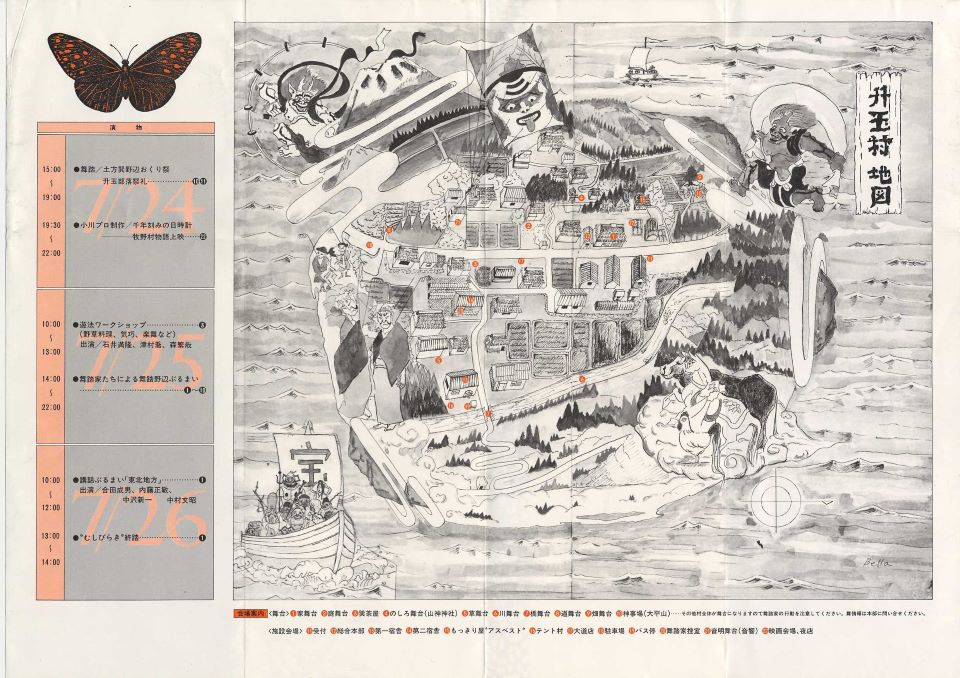
- Performer(s)
- Asbestos-kan
- Venue
- Masudama village, Yamagata Pref.
- Year performed
- 1987
-
My Inner Sylphide
For Wakamatsu, whose first performance was Les Sylphides, Sylphides had the resonance of youth. Isadora Duncan's Chopin collection was supervised by Fokin, while Glazunov and Keller transformed Chopin's music to create a suite, which they named Les Sylphides, a play on La Sylphide. This was also the beginning of modern ballet. Both Hagoromo [from Japanese mythology] and Sylphide are male ideals - ideals which disappear when they become reality. The more unattainable an ideal is, the more beautiful it is.
- Participated in the ACA National Arts Festival 1978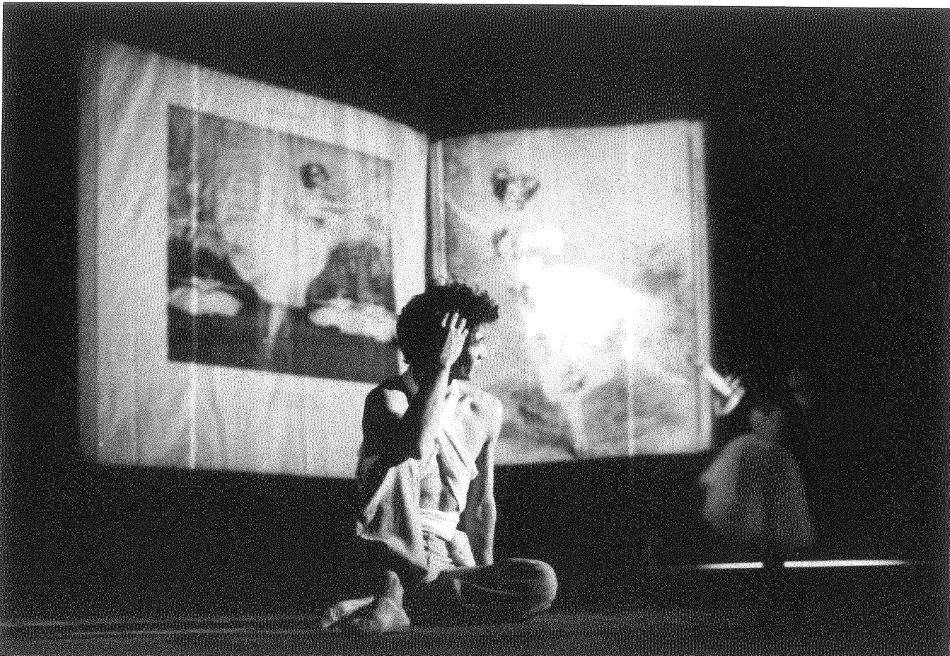
- Performer(s)
- Wakamatsu Miki & Tsuda Ikuko Free Dance Performance
- Director/Choreographer
- Miki Wakamatsu, Ikuko Tsuda
- Venue
- Yomiuri Hall
- Year performed
- 1978
-
My Mother
Kim Manri's first solo work. This symbolic piece is an expression of yearning and receiving from her deceased mother, a master of classical Korean performance. Wanting to create a female version of Ohno Kazuo's iconic work 'My Mother', she received guidance from Ohno Kazuo and Ohno Yoshito in creating this piece.
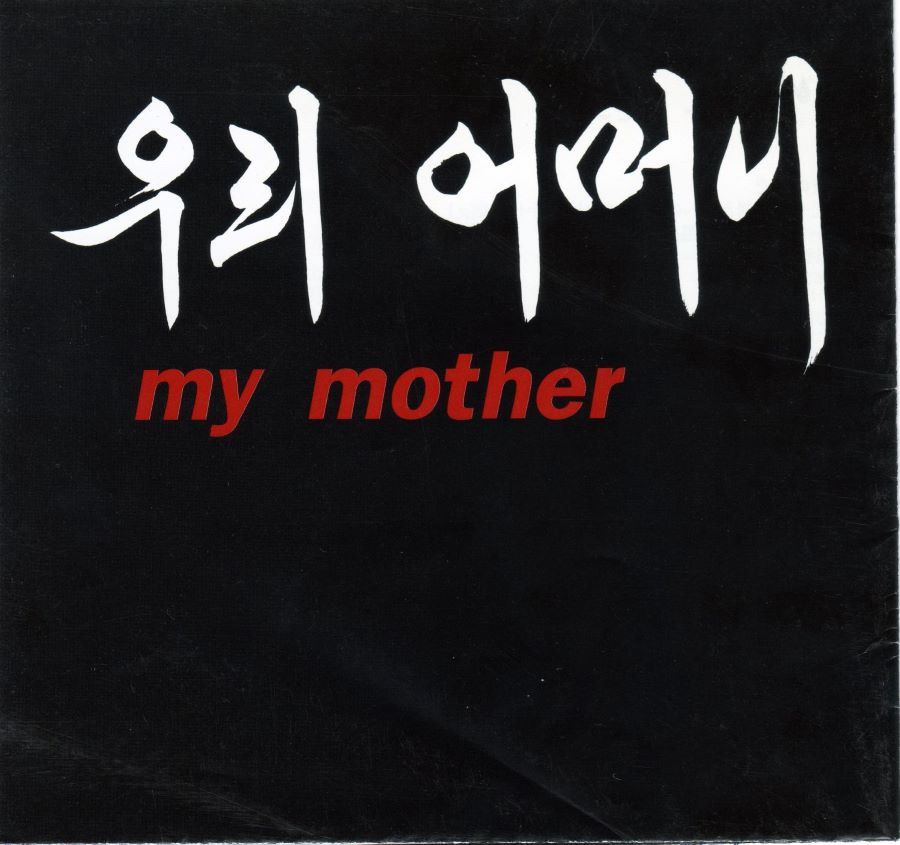
- Performer(s)
- Performance Troupe TAIHEN
- Director/Choreographer
- Kim Manri
- Venue
- Ogimachi Museum Square
- Year performed
- 1998
-
My Mother
Kazuo Ohno's masterpiece, first performed in 1981. The work is in memory of his mother, a modern woman who excelled at European cooking and often performed the koto. The programme included writings which hinted at specific events from his mother's life, such as the story of a mother who lost and prayed for her young daughter ('Flower Train'), and the words of a mother on her deathbed ('Last Words'). However Ohno's movements on stage were abstract. The 'ozen' [small dining table] which appears during the piece symbolised his mother.
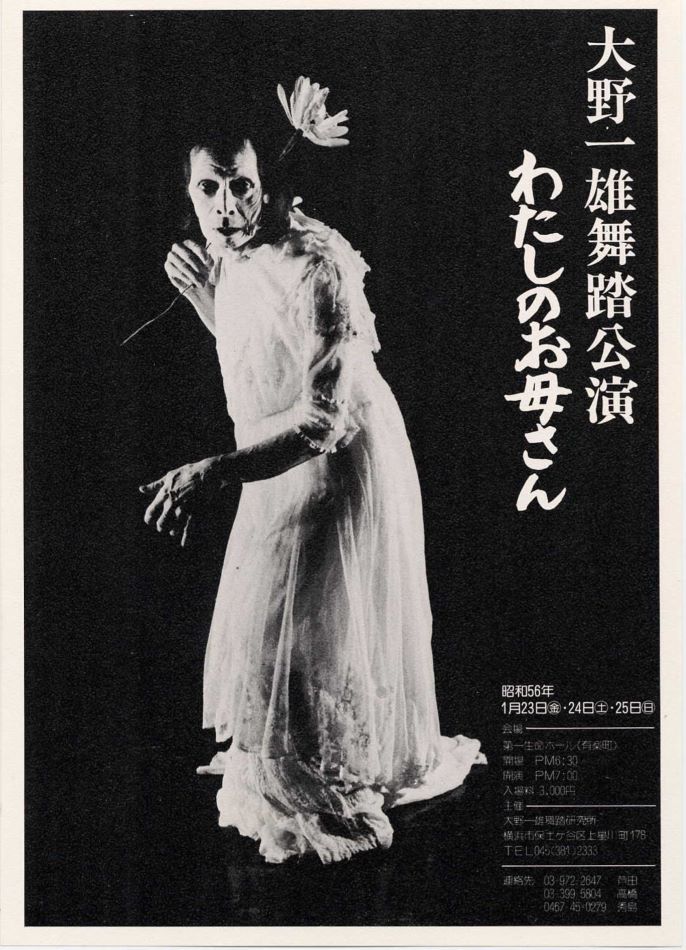
- Performer(s)
- Kazuo Ohno Dance Studio
- Director/Choreographer
- Kazuo Ohno
- Venue
- Daiichi Seimei Hall
- Year performed
- 1981
-
Mythology
This piece, as with all of Akiko Motofuji's butoh works, was based on mythology. With an awareness of the long history between the body and the earth, her performance is full of the deep joy that comes of dancing with the earth. Coming from novel ideas, it was different to her previous work, but the audience and butoh dancers received this provocative and experimental style well. It demonstrated Motofuji's personal approach to physical expression, while working with the methods of Tatsumi Hijikata.
- Performer(s)
- Asbestos-kan
- Director/Choreographer
- Akiko Motofuji
- Venue
- Asbestos-kan
- Year performed
- 1997
-
Naked Performance! Byakko-sha
The programme begins with Byakko-sha’s dance video "The Kingdom of Light" (filmed in Australia, winner of the Tokyo International Video Biennale Grand Prix), followed by an interview with Isamu Osuka conducted by Ryutaro Kamioka, the programme host. The programme also includes footage of "ART BODIC", the "Kumano Summer Butoh + Performing Arts Workshop", and a European Nikon commercial, offering a broad introduction to Osuka’s personality, artistic vision, and Byakko-sha’s activities.
-EX TELEVISION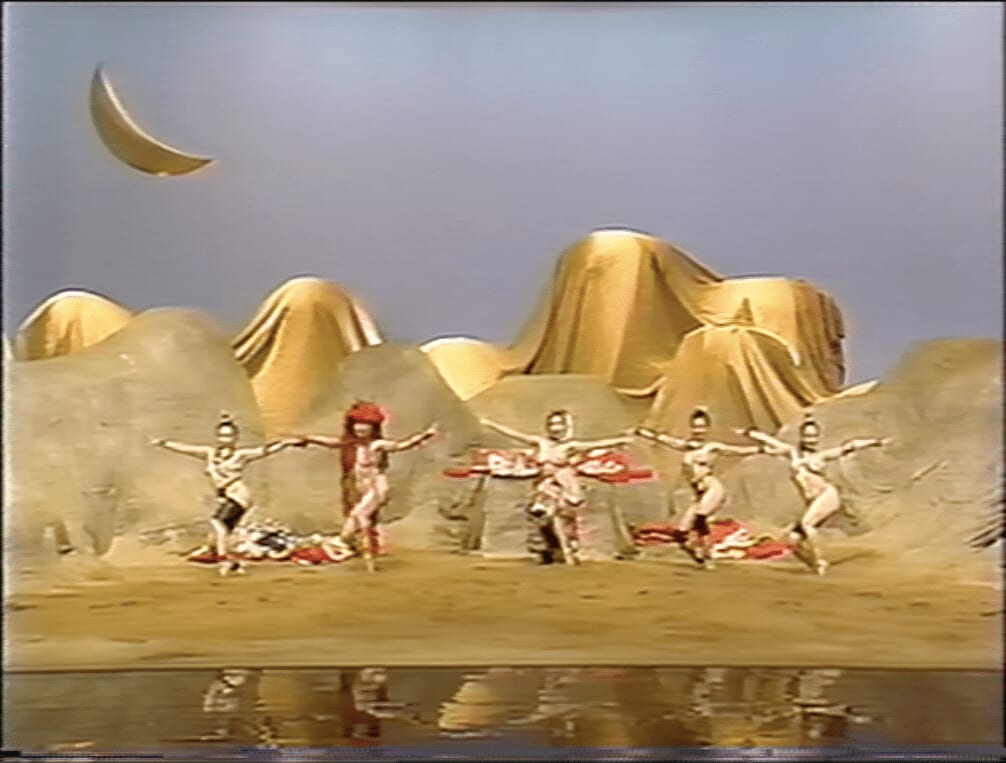
- Performer(s)
- Byakko-sha
- Year performed
- 1991
-
NHK Performing Arts: Expressionists of the Body – From Butoh Festival ’85
The NHK Performing Arts TV program [NHK Geijutsu Gekijo] featured the first butoh festival held in Japan in 1985. The festival was organised by the Nippon Cultural Centre under the title 'Collection of Confessions Seven Seasons and Castles' and featured seven performances over 14 days. This broadcast began with an introduction to butoh by dance critic Naruo Goda and a narrative by Tatsumi Hijikata, followed by performance footage of Dairakudakan's 'Book of Five Rings: Root, Pillar and Joint', Kazuo Ohno Kazuo and Yoshito Ohno's 'The Dead Sea: Viennese Waltz and Ghosts' and Min Tanaka + Maijuku's 'Midday Moon', along with interviews.
Butoh Festival '85 took place on 9-27 February 1985.
The Dairakudakan, Kazuo Ohno and Yoshito Ohno performances were recorded at Yūrakuchō Asahi Hall.
Min Tanaka's performance was recorded at Shinjuku Bunka Center.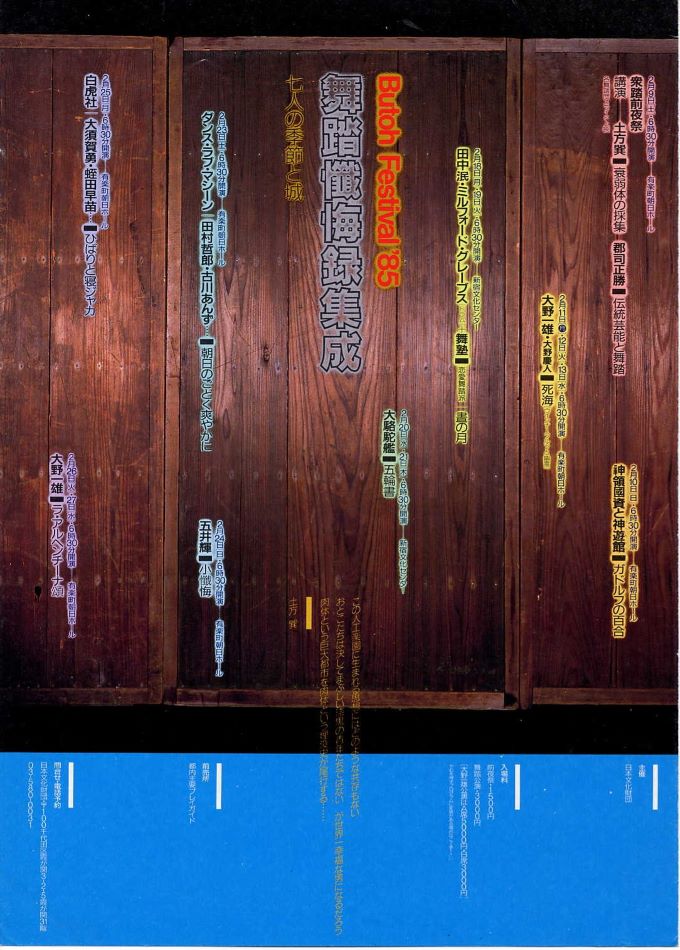
- Performer(s)
- Nippon Cultural Centre
- Year performed
- 1985
-
Night Tide
Eiko & Koma's first piece with full nudity. NIGHT TIDE explored the body as a landscape. This work was inspired by Eiko & Koma’s solitary living in the Catskills where they felt the movement of mountains. It was created at the time Eiko & Koma were awarded a fellowship from the Foundation for Contemporary Arts. Eiko & Koma received their first Bessie (New York Dance and Performance Award) for GRAIN and NIGHT TIDE, presented in a single evening at Dance Theater Workshop. NIGHT TIDE was also presented as a part of NEW MOON STORIES in 1986.
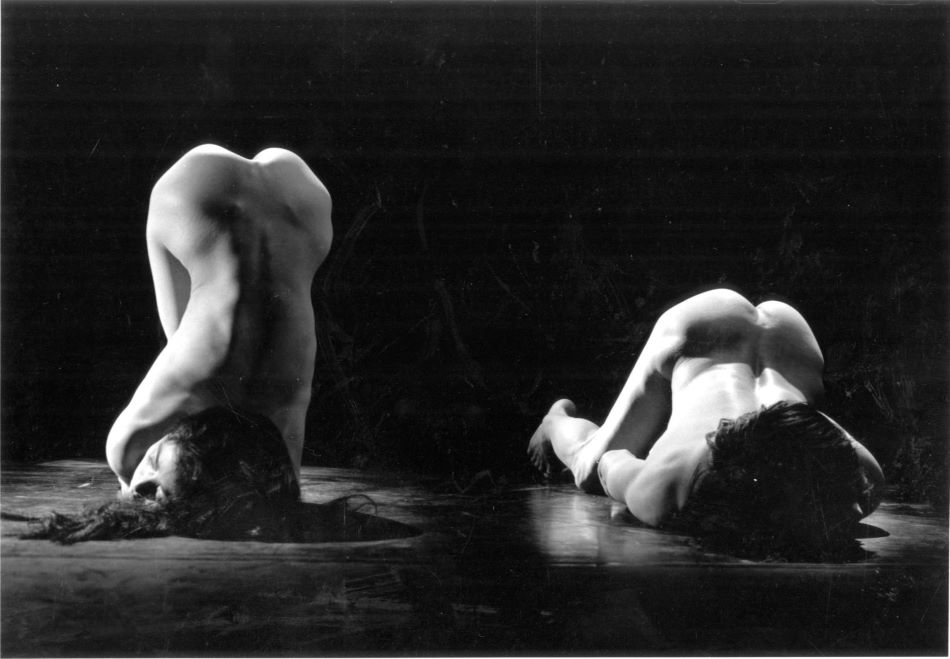
- Performer(s)
- Eiko & Koma
- Director/Choreographer
- Eiko & Koma
- Venue
- American Dance Theater Workshop (NY)
- Year performed
- 1984
-
Nouvelle Tragique
The dance is based on Marquis de Sade's 'Nouvelle Tragique' (translated into Japanese by Tatsuhiko Shibusawa), which depicts a tragedy of incest. The performance had act, five scenes, and was first performed as 'Butoh Works I'. Later, in March, Marquis de Sade's '120 Days of Sodom' (translated into Japanese by Tatsuhiko Shibusawa) was performed as 'Butoh Works II', and then in May 'Dead Beauty: For Edgar Allan Poe' was performed as 'Butoh Works III'. Akira Kasai touches on Sade's innocence in his book 'Twilight of the Gods', published in March 1979.
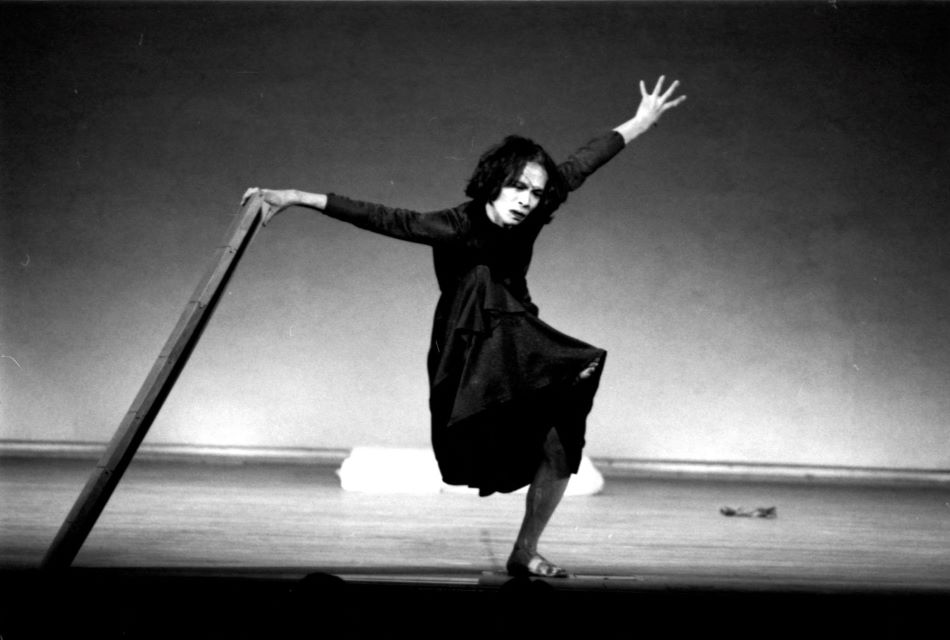
- Performer(s)
- Tenshi-Kan
- Director/Choreographer
- Akira Kasai
- Venue
- Daiichi Seimei Hall
- Year performed
- 1979
-
Nurse’s Song
Performed with TRILOGY, this piece was choreographed to William Blake's "Nurse's Song", music composed by Allen Ginsberg. We became friends with him in Colorado in 1980 in Naropa Institute in Colorado where he and we were teaching separate courses. We also asked Bob Carroll to sing that song because Allen was not available and we also created an instantaneous band with friends and named it as DIRT BAND. Bob was a very well-known stand-up comedian who create political satire and usually performs a solo. We were really close friends. Shortly after the piece’s premiere at The Kitchen, Eiko & Koma left New York City for the Catskills. They never performed Nurse’s Song again.
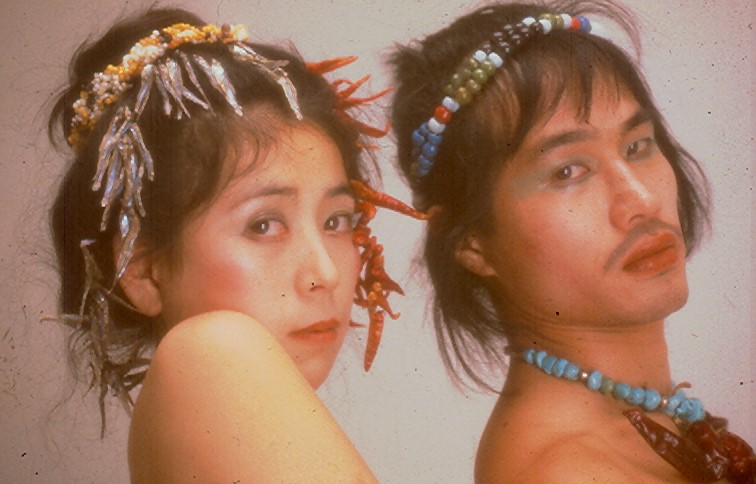
- Performer(s)
- Eiko & Koma
- Director/Choreographer
- Eiko & Koma
- Venue
- The Kitchen (NY)
- Year performed
- 1981
-
Odoru Otoko
Shoichi Fukushi is a butoh dancer based in Aomori and the founder of Odoradeku Street Theater. For 35 years, he worked at Aomori City Hall while also performing butoh on the streets and in theatres, both in Japan and internationally. The video documents his tour of France in May 2017, where he danced in the streets, schools, galleries, and other spaces in Strasbourg and Nîmes. It also captures his interactions with the people he met along the way through butoh. In Paris, he participated in a butoh festival at the Espace Culturel Bertin Poirée.
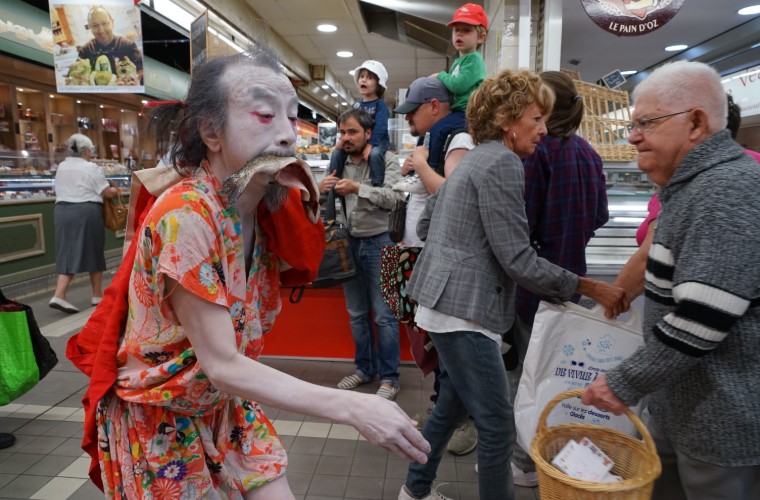
- Performer(s)
- Shoichi Fukushi
- Director/Choreographer
- Shoichi Fukushi
- Venue
- France
- Year performed
- 2017
-
Ondine
Performed at the Hosei University Student Hall, which no longer exists. At the time, many events were organised under the management of students, and this production was also organised by the such a theatre group called the Black Spotlight (1974-2004). Ondine is a water nymph from Greek mythology, and has been adapted into various works by Giraudoux, Andersen, Shiki Theatre Company, and Terayama Shuji and others. The theme set up Yubiwa Hotel was "Ondine, the diseases of this world. Concomitant with love, it spreads. There is no cure", and the venue was transformed into a sea of fertile red soil.
Main performance at the Yubiwa Hotel: 6 (Roku)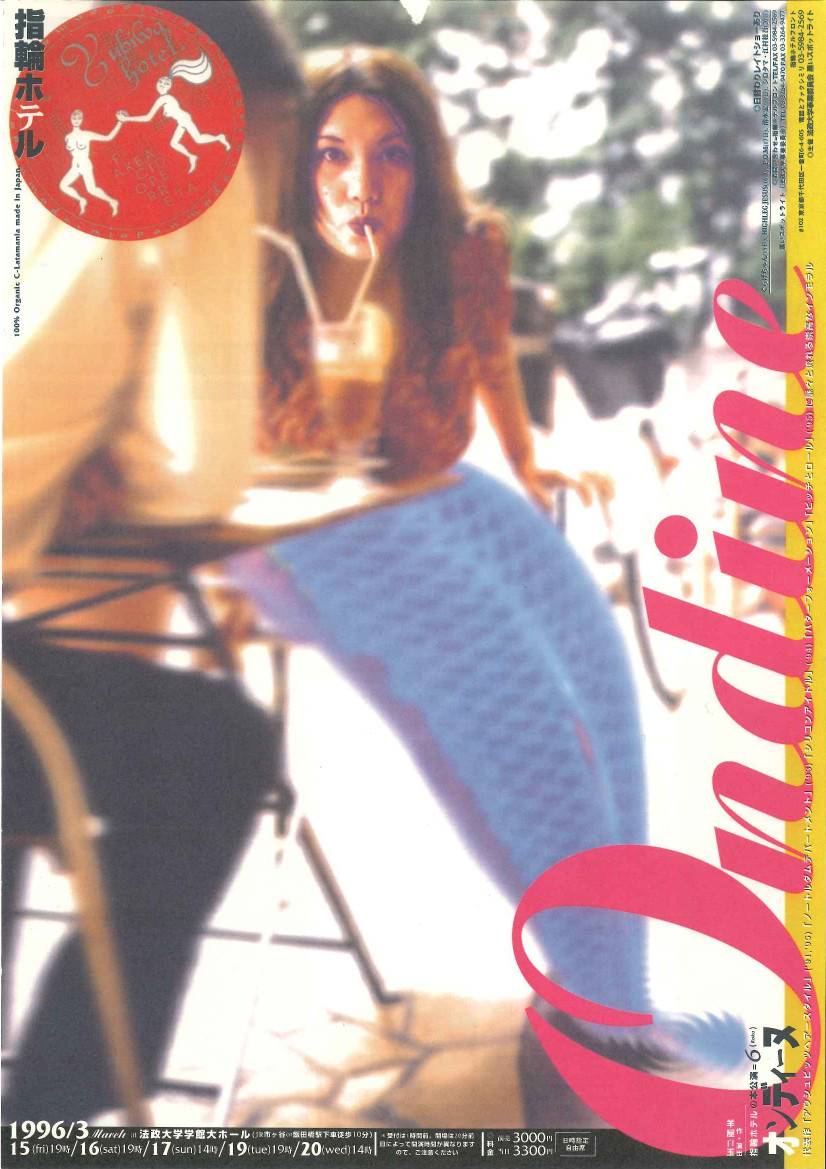
- Performer(s)
- YUBIWA Hotel
- Director/Choreographer
- Shirotama Hitsujiya
- Venue
- Hosei University Student Union Hall
- Year performed
- 1996
-
One Year (Tokyo Scene 88)
TOKYO SCENE 88 featured four works between 8-11 December 1988, with the theme "pure collaboration between space and acoustic sound. Looking to the future of people and materials". This piece is a collaboration between Hasegawa Roku, also editor-in-chief of the magazine Dance Work, and Mizushima Kazue, before she invented 'stringraphy'.
- Performer(s)
- Studio 200
- Director/Choreographer
- Roku Hasegawa
- Venue
- Studio 200
- Year performed
- 1988
-
One’s Solo Blue
"Whilst claiming ""each dance can only be performed once in a lifetime"", this work was rare in that it was performed numerous times. In the autumn of 1993, it was performed for the first time on stage with a 10 minute solo to music by Xenakis. The work is inspired by an image of the sky filled with morning dew, making use of lighting effects, while movements are inspired by puppetry.
Since 1994, this work has toured along with the work of seven other dancers to multiple venues across Italy, Israel, and the United States."
-Performed at the Daniel Ezralow and Friends 1994 Italy Tour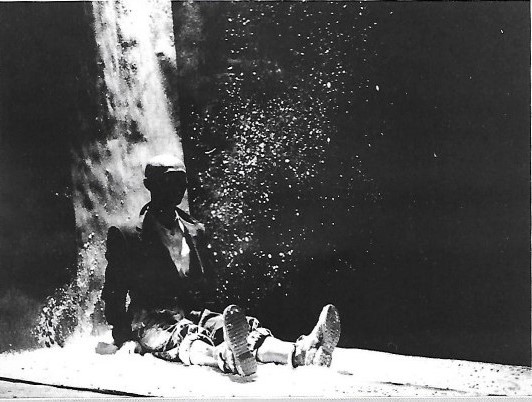
- Performer(s)
- Naoyuki Oguri
- Director/Choreographer
- Oguri
- Venue
- Milano
- Year performed
- 1994
-
120 Days of Sodom
"Following 'Butoh Works I: Nouvelle Tragique', performed in January of the same year, this piece is based on Marquis de Sade's '120 Days of Sodom', translated into Japanese by Tatsuhiko Shibusawa. In Akira Kasai's 'Twilight of the Gods', published on 10 March, he touches on Sade's innocence.
In May 'Dead Beauty: For Edgar Allan Poe' was performed as 'Butoh Works III', and shortly afterwards, Kasai temporarily closed Tenshikan to study eurythmy in Germany."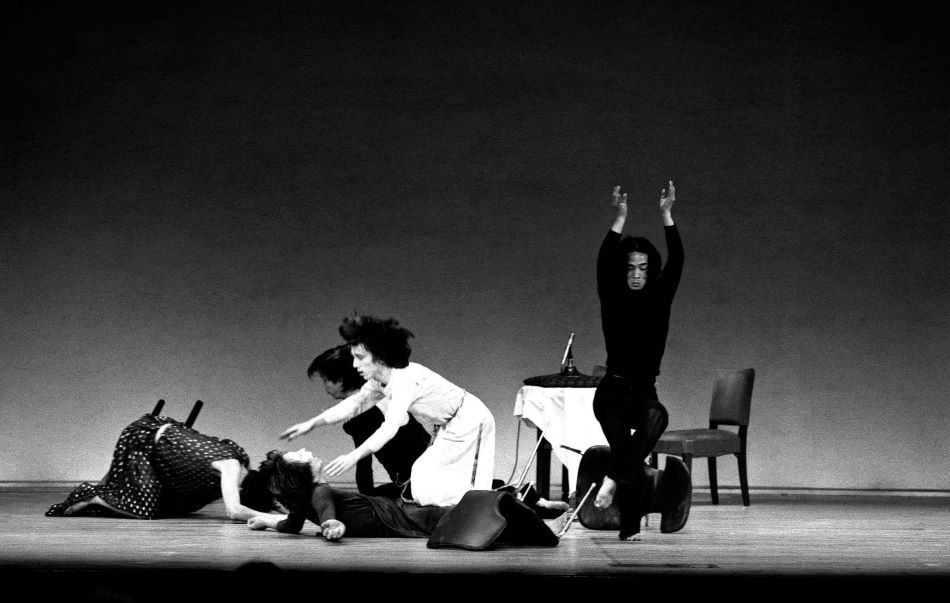
- Performer(s)
- Tenshi-Kan
- Director/Choreographer
- Akira Kasai
- Venue
- Daiichi Seimei Hall
- Year performed
- 1979
-
Opening Performance at Disco Twin Star Kagurazaka
In 1992 Twin Star, a new disco aimed at adults, opened in Kagurazaka. For the opening night, Byakko-sha’s ART BODIC performed a special live show, which included a geisha performance and a kinpun [gold powder/body paint] show. ART BODIC was Byakko-sha's "takeout" performance group, operating alongside their main productions. It "delivered" Body and Art to a wide range of events, from weddings and birthday parties to concerts and TV commercials. The group aimed to create a "more thrilling performance spectacle" that transcended the stereotypical boundaries of butoh.
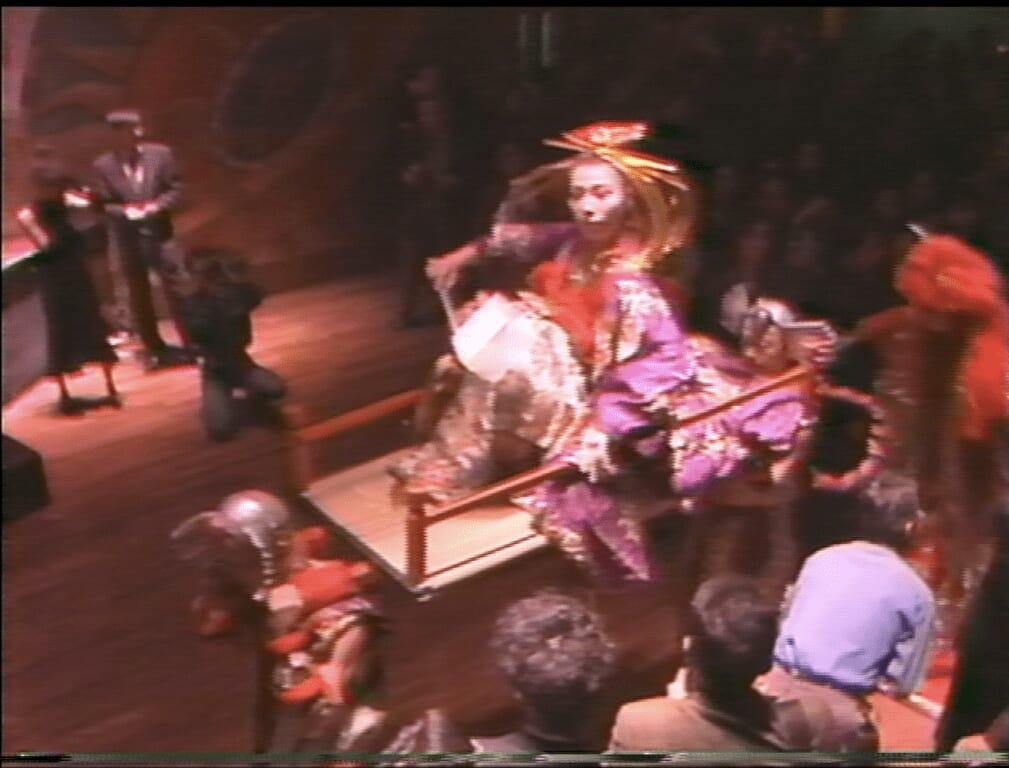
- Performer(s)
- Byakko-sha
- Director/Choreographer
- Isamu Osuka
- Venue
- Kagurazaka Twin Star
- Year performed
- 1992
-
OTOEYAMA
Through a chain of small mountains connecting villages
In the harsh sorrow-filled Northern seasons
The waters of Ishikari flowed. - From the flyer
Otoeyama [Mount Otoe] could be seen across the Ishikari River from the house where Goi Teru was born and raised. Together with Mount Okirikawa and Mount Mumei, the 730m high flat mountain is known locally as the Otoe Mountain Range.
-Goi Teru Butoh Solo-Don't cry boy
-36th Dance Critics Society of Japan Award (2004)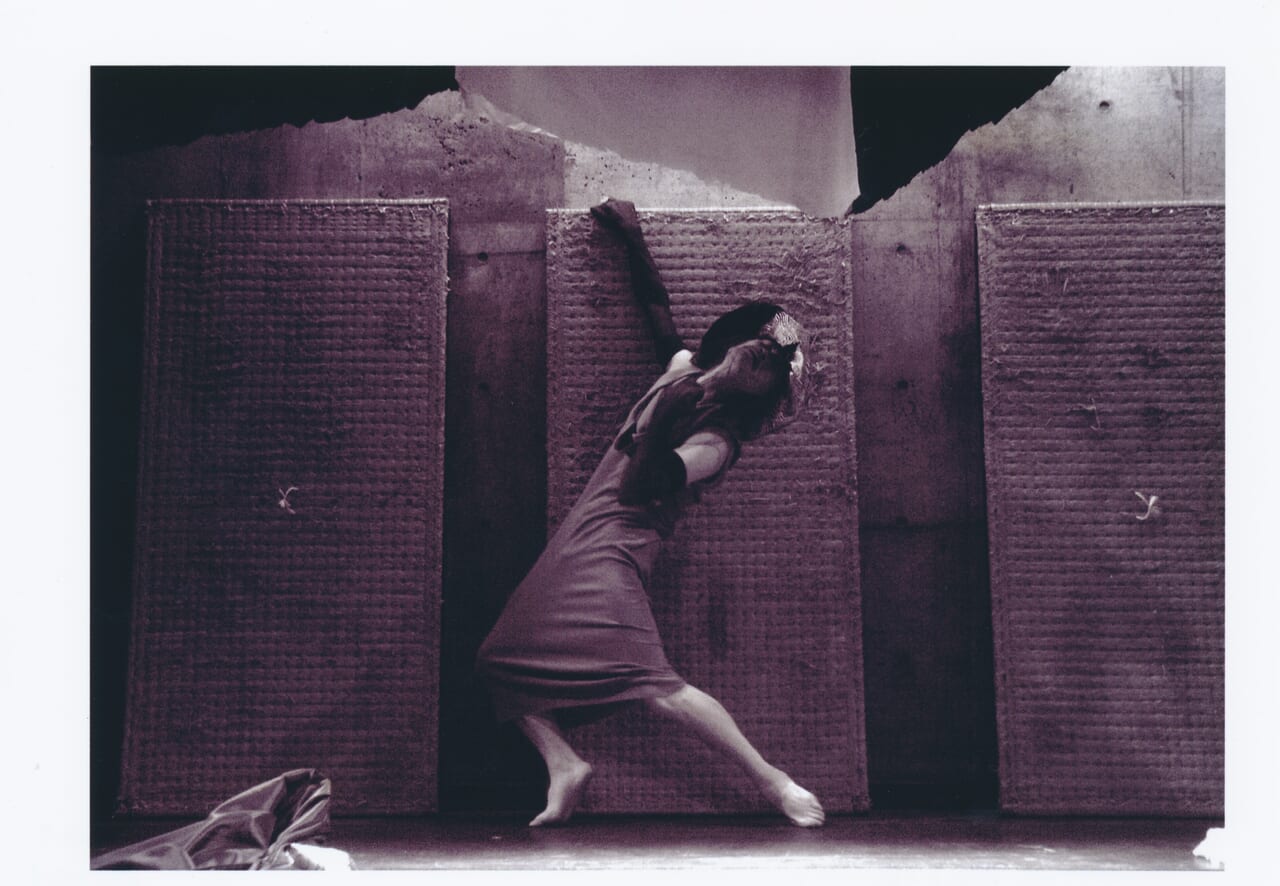
- Performer(s)
- Teru Goi
- Director/Choreographer
- Teru Goi
- Venue
- Terpsichore
- Year performed
- 2004
-
OUT OFF (Rabenstein and The Collector)
The second ’Beauties and Beasts' project collaboration between Kim Ito and Yumiko Yoshioka, performed in Tokyo and Avignon. The concept is parallel solo performances (Yoshioka's 'Rabenstein' and Ito's 'The Collector'), which performed side by side become a duet. Both solos examine boundaries, and look at themes of the outsider. The German newspaper Der Tagesspiegel praised the performance as 'a coexistence of extremes: the pleasure of playing in paradise alongside the fear of the exiled'.
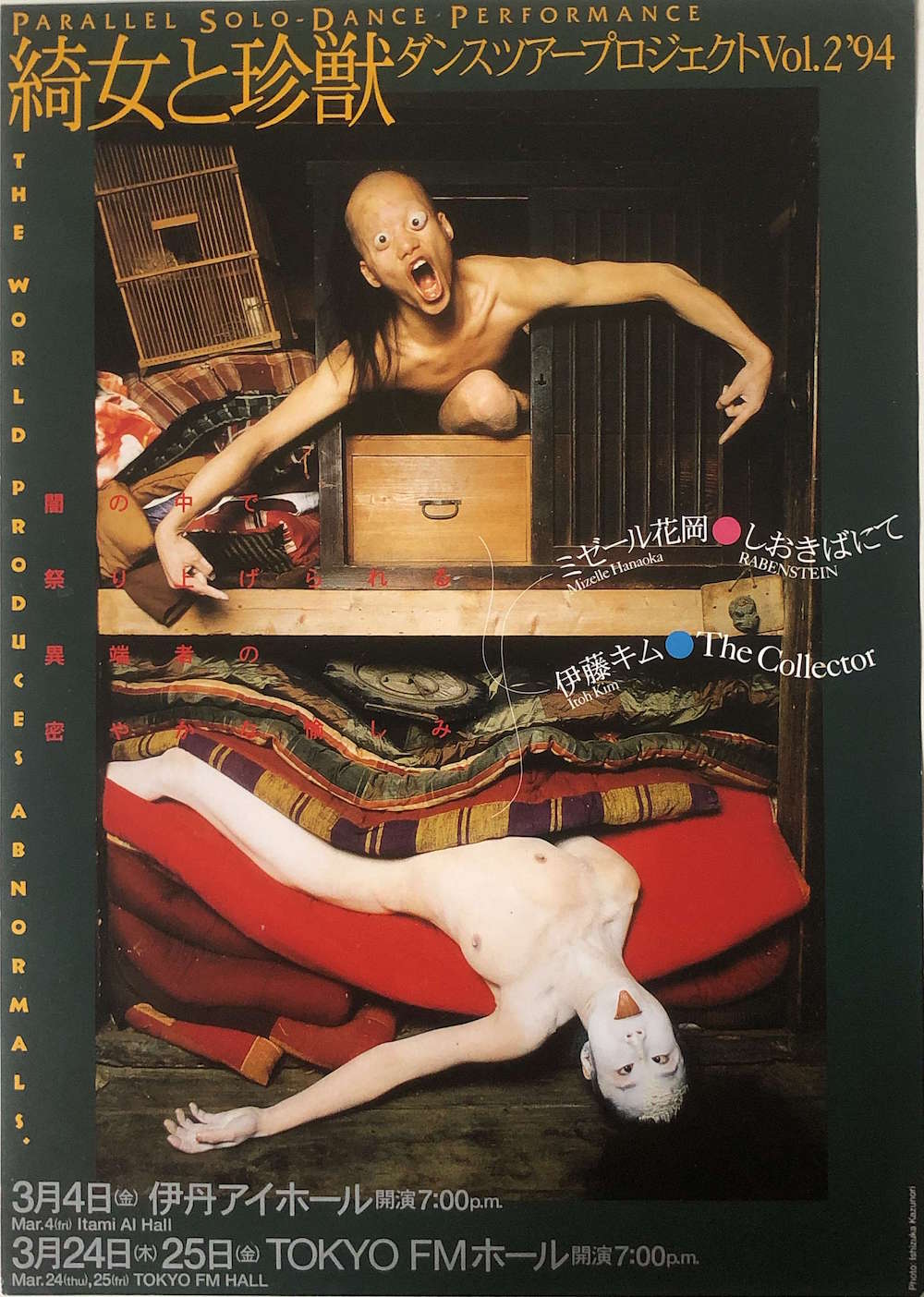
- Performer(s)
- tatoeba
- Director/Choreographer
- Delta Ra'i
- Venue
- Tokyo FM Hall
- Year performed
- 1994
-
Oval Illusion (DAEN-GENSO)
Thoughts are always elliptical. They come near then far into the distance again. Is existence nothing but distance? There are many overlapping ellipses. Life and death, light and shadow, and my reflected self wanders through the labyrinth of the body. There, the attractions and repulsions of butoh and image violently collide. A flood of shadows overflow from the inside out. This is the start of an outside without an inside. When these incidents occur on stage, the large ellipse tilts.' - Waguri Yukio
Waguri Yukio + Kozensha Butoh Performance
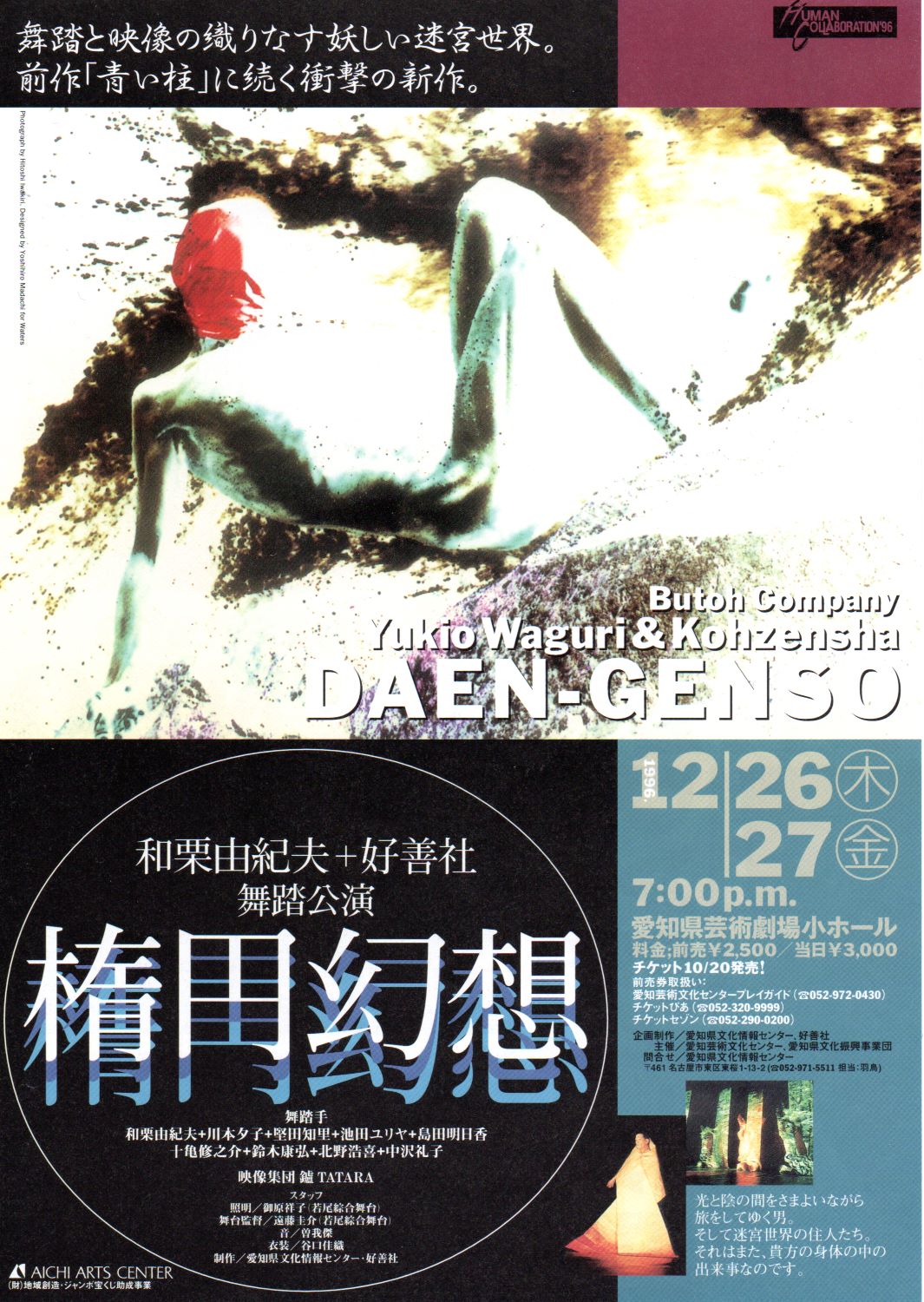
- Performer(s)
- Yukio Waguri + Kozensha
- Director/Choreographer
- Yukio Waguri
- Venue
- Aichi Prefectural Art Theater : Mini theater
- Year performed
- 1996
